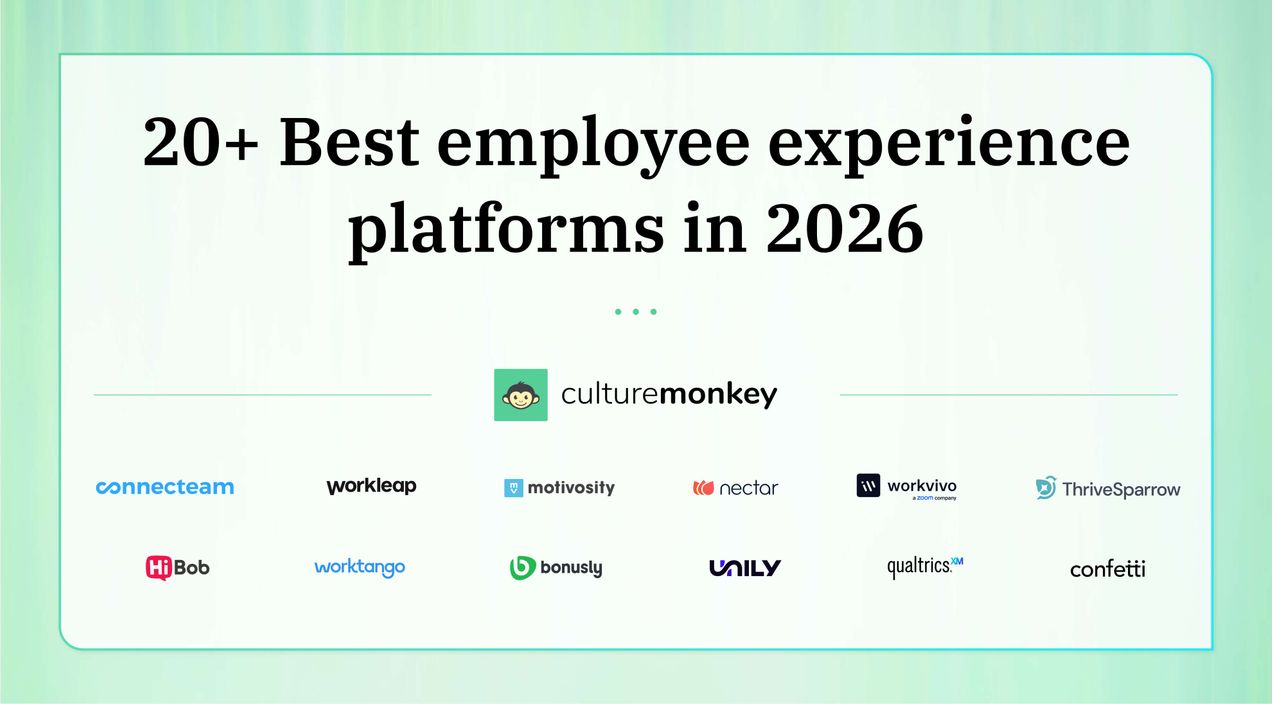How to approach labor relations across traditional industries: A guide for leaders in 2024

Have you noticed that the traditional 9-to-5 grind is evolving faster than ever before? Industries are challenging established standards and really shaking up their approach to labor relations.
While core principles of labor relations remain important, leaders in established industries need to adapt their approach to navigate the changing dynamics between employers and employees.
Well, this guide offers a comprehensive overview for leaders in 2024, equipping them with the knowledge and strategies to foster positive labor relations. We'll explore how fostering employee relations in a collaborative environment with open communication and mutual respect can benefit both employers and employees.
What is labor relations at work?

Labor relations at work are a dynamic and intricate network of interactions, negotiations, and regulatory frameworks that define the intricate dance between employers and employees within the organizational ecosystem.
This multifaceted domain is marked by the convergence of diverse stakeholders, ranging from individual workers seeking fair treatment and representation to labor unions championing collective bargaining interests, alongside management teams striving for operational efficiency and regulatory bodies overseeing adherence to labor laws.
At its heart, labor relations hinge on the principle of collective bargaining, where employers and labor unions engage in negotiations to delineate the terms and conditions of employment.
These negotiations, facilitated by labor relations specialists from other federal agencies, traverse various facets of the employment relationship, encompassing discussions on wages, benefits, working hours, job security, and dispute resolution mechanisms.
Labor relations vs employee relations

Labor relations and employee relations are closely related concepts within the broader field of human resource management, yet they have distinct focuses and scopes.
Labor relations:
- Focus: Primarily concerns the relationship between employers and organized labor entities, such as labor unions or workers' associations.
- Scope: Centers on collective bargaining, negotiation of labor contracts, and addressing issues related to wages, benefits, working conditions, and dispute resolution within a unionized workforce.
- Key Elements: Collective bargaining agreements, union representation, labor laws and regulations (e.g., NLRA), labor union membership, strikes, and lockouts.
- Example: A manufacturing company negotiating with a labor union regarding wage increases for factory workers.
Employee relations:
- Focus: Encompasses the broader spectrum of relationships and interactions between employers and individual employees, whether or not they are unionized.
- Scope: Involves managing and maintaining positive relationships between employers and employees, addressing individual employee needs, concerns, and grievances, and promoting a harmonious work environment.
- Key Elements: Communication, conflict resolution, disciplinary actions, performance management, employee engagement, and fostering a positive organizational culture.
- Example: Addressing an employee's performance issues through coaching and feedback sessions, or resolving conflicts between team members in a department.
While both labor relations and employee relations share the same goal of fostering positive workplace environments, they differ in their focus and the nature of the relationships they address.
Labor relations predominantly concern collective bargaining and negotiations with organized labor groups, namely unions, whereas employee relations encompass the broader spectrum of interactions between employers and individual employees, regardless of union affiliation.
Both are essential aspects of effective human resource management, contributing to organizational success and employee satisfaction.
Why is the labor relations process important?

- Balancing interests of workers: The labor relations process provides a structured framework for balancing the interests of employers and employees. Mechanisms such as collective bargaining, negotiations, and dispute resolution facilitate the fair resolution of conflicts and the establishment of mutually beneficial agreements regarding wages, benefits, working conditions, and other employment-related matters.
- Legal compliance: Adhering to the labor relations process ensures compliance with labor laws and regulations. Laws such as the National Labor Relations Act (NLRA) in the United States mandate certain rights and protections for both employers and employees, including the right to organize, bargain collectively, and engage in concerted activities. By following the law and prescribed processes, organizations mitigate the risk of legal disputes and penalties.
- Employee representation: The labor relations process provides a platform for employees to have their voices heard and interests represented. Through the national labor relations board, unions or other representative bodies, employees can collectively negotiate collective bargaining agreements with employers to address issues such as wages, benefits, job security, and workplace safety. This fosters a sense of empowerment and solidarity among workers.
- Promoting stability and productivity of labor movement: Effective labor relations contribute to a stable and harmonious work environment, minimizing disruptions such as strikes, lockouts, or labor disputes. By addressing employee concerns and maintaining open channels of communication, organizations can enhance employee morale, engagement, and productivity, ultimately driving business success.
- Conflict resolution: The labor relations process includes mechanisms for resolving conflicts and grievances in the private sector in a fair and impartial manner. By providing avenues for mediation, arbitration, or other dispute resolution methods, it helps prevent conflicts from escalating into costly and disruptive disputes. Timely resolution of issues promotes trust, respect, and cooperation between employers and employees.
- Enhancing organizational reputation: Organizations that demonstrate a commitment to fair labor practices and constructive labor relations build a positive reputation both internally and externally. A reputation for treating employees fairly and respecting their rights can attract top talent, enhance brand loyalty, and foster positive relationships with stakeholders, including customers, investors, and the broader community.
How to approach a labor relations framework?

Approaching a labor relations framework involves understanding the dynamics between workers and employers while navigating labor laws and industry practices. It encompasses building constructive relationships with labor unions, promoting employee satisfaction, and ensuring compliance with regulations.
Additionally, it requires fostering open communication, addressing workplace conflicts, and prioritizing fair negotiations to achieve mutually beneficial outcomes.
By engaging with labor relations specialists, leveraging collective bargaining processes, and staying informed about labor statistics and trends, organizations can create a conducive environment for productive labor-management relations.
Ultimately, establishing a robust labor relations framework is essential for fostering a positive work culture, enhancing employee well-being, and driving organizational success in today's dynamic business landscape.
7 Benefits of labor relations for any business in 2024

Know the rules: Understand labor and employment laws and regulations
- Familiarize yourself with local, state, and federal labor laws applicable to your industry.
- Stay updated on any changes or updates to labor regulations.
- Ensure compliance with laws regarding wages, working hours, overtime, discrimination, and workplace safety.
Understand your company: Get to know your company's culture and needs
- Take time to understand the values, mission, and goals of your organization.
- Identify the unique aspects of your company's culture and how they influence labor relations.
- Consider the specific needs and challenges of your workforce, such as diversity, remote work, or shift schedules.
Set clear guidelines: Create straightforward policies for things like disputes and representation
- Develop written policies and procedures that outline the process for handling labor-related issues.
- Clearly define roles and responsibilities for employees, managers, and HR personnel.
- Ensure that policies regarding grievances, disciplinary actions, and representation are transparent and easily accessible to all employees.
Encourage communication: Foster an environment where everyone can speak up
- Create open channels of communication where employees feel comfortable expressing their concerns and ideas.
- Encourage regular dialogue between management and employees through team meetings, suggestion boxes, or open-door policies.
- Actively listen to employee feedback and address any issues or concerns promptly and constructively.
Work with employee representatives: Build positive relationships with your union members and your union leaders if applicable
- If your workforce is unionized, establish a collaborative relationship with union representatives based on mutual respect and trust.
- Engage in regular discussions and negotiations with union leaders to address issues related to wages, benefits, and working conditions.
- Maintain open lines of communication to prevent misunderstandings or conflicts from escalating.
Educate your team: Provide training and education on labor relations and conflict resolution
- Offer training programs or workshops to educate employees, managers, and HR personnel about labor laws, regulations, and company policies.
- Provide guidance on effective communication, conflict resolution techniques, and negotiation skills.
- Ensure that everyone understands their rights and responsibilities under the labor relations framework.
Keep tabs on progress: Monitor how well your framework is working and be ready to adjust
- Regularly evaluate the effectiveness of your labor relations framework by tracking key performance indicators, such as employee satisfaction, turnover rates, and resolution of disputes.
- Solicit feedback from employees, managers, and union representatives to identify areas for improvement.
- Be prepared to make adjustments to policies, procedures, or communication strategies based on feedback and changing circumstances.
Deal with issues fairly: Address problems promptly and fairly
- Handle employee grievances, disputes, or disciplinary actions promptly and impartially.
- Follow established procedures for investigating complaints, gathering evidence, and making decisions.
- Treat all employees with respect and ensure due process is followed in all labor-related matters.
Stay updated: Keep an eye on changes in labor laws, employment conditions and trends in the industry
- Stay informed about changes in labor laws, regulations, and court rulings that may impact your organization.
- Monitor industry trends and best practices in labor relations to stay ahead of the curve.
- Seek guidance from legal counsel or industry experts if needed to ensure compliance and adaptability in a rapidly changing environment.
Significance of labor relations across traditional industries

Healthcare:
- Patient care quality: Proper labor relations ensure that healthcare workers, including nurses, doctors, and support staff, are satisfied and motivated, leading to better patient care outcomes.
- Workforce safety: Effective labor relations foster a culture of safety, reducing workplace accidents and ensuring the well-being of both healthcare workers and patients.
- Regulatory compliance: Compliance with labor laws and regulations is crucial in healthcare to avoid legal issues and maintain the integrity of patient care.
- Staffing stability: Positive labor relations help healthcare facilities retain skilled and experienced staff, reducing turnover and ensuring continuity of care.
- Collaborative decision-making: In healthcare, labor relations facilitate collaboration between management and healthcare professionals, allowing for effective decision-making and improvements in patient care delivery.
Manufacturing:
- Productivity and efficiency: Proper labor relations contribute to a harmonious work environment, boosting productivity and efficiency in manufacturing operations.
- Quality control: Engaged and satisfied workers are more likely to adhere to quality standards and procedures, leading to higher-quality products and fewer defects.
- Innovation: Labor relations that encourage employee involvement in decision-making foster a culture of innovation, leading to process improvements and product innovations.
- Supply chain stability: Labor disputes or disruptions can impact manufacturing supply chains. Strong labor relations help prevent such disruptions, ensuring continuity in production and delivery.
- Employee development: Labor relations initiatives such as training programs and skill development opportunities enhance employee capabilities, leading to a more skilled and adaptable workforce in manufacturing.
Hospitality:
- Customer satisfaction: Labor relations directly impact guest experiences in the hospitality industry. Satisfied and motivated employees provide better service, leading to higher customer satisfaction and loyalty.
- Employee retention: Positive labor relations reduce turnover in hospitality establishments, saving on recruitment and training costs and ensuring a stable workforce.
- Brand reputation: A positive workplace environment and fair labor practices enhance the reputation of hospitality businesses, attracting customers and investors alike.
- Safety and hygiene: Proper labor relations promote safety and hygiene standards in hotels, restaurants, and other hospitality venues, safeguarding the health and well-being of guests and employees.
- Flexibility and adaptability: In the dynamic hospitality industry, labor relations that support flexible scheduling and cross-training enable businesses to adapt to changing customer demands and market trends.
Construction:
- Safety culture: Labor relations initiatives focused on safety training and compliance ensure a safe working environment in construction, reducing accidents and injuries on job sites.
- Project efficiency: Positive labor relations contribute to smoother project execution and timely completion of construction projects by minimizing disruptions and conflicts among workers.
- Skilled workforce retention: In an industry facing a shortage of skilled labor, proper labor relations help construction firms retain experienced workers, reducing turnover and maintaining project continuity.
- Regulatory compliance: Compliance with labor laws and regulations is crucial in construction to avoid penalties, litigation, and project delays.
- Collaboration with trade unions: Building strong relationships with trade unions fosters cooperation and partnership, enabling construction firms to address workforce challenges and negotiate fair labor agreements.
Food & beverages:
- Food safety and quality: Labor relations that prioritize employee training and adherence to hygiene standards ensure the safety and quality of food products, protecting consumer health and reputation.
- Customer satisfaction: Engaged and motivated employees in the food and beverage industry provide better service, leading to enhanced customer satisfaction and loyalty.
- Compliance and regulation: Labor relations ensure compliance with health and safety regulations, food safety standards, and labor laws, mitigating legal risks and ensuring business continuity.
- Cost control: Effective labor relations contribute to cost control in food and beverage operations by minimizing labor-related expenses such as turnover costs and overtime payments.
- Innovation and menu development: Labor relations that encourage employee input and collaboration foster innovation in menu development, recipe creation, and process improvement, keeping businesses competitive in the market.
5 Labor relations examples to get inspiration from

1. Employee-management collaboration committees:
- Establishing joint committees composed of both management representatives and employees to address workplace issues and make decisions collaboratively.
- These committees can focus on areas such as safety improvements, workflow optimization, or employee benefits, fostering a sense of ownership and engagement among workers.
2. Conflict resolution training programs:
- Implementing training programs on conflict resolution techniques for both managers and employees.
- These programs equip individuals with the skills to effectively manage and resolve workplace conflicts, promoting a culture of open communication and constructive problem-solving.
3. Flexible work arrangements:
- Offering flexible work arrangements such as telecommuting, flextime, or compressed workweeks to accommodate employees' varying needs and preferences.
- Flexible work options can improve work-life balance, enhance job satisfaction, and boost productivity while demonstrating an organization's commitment to supporting its workforce.
4. Employee recognition and reward programs:
- Implementing programs to recognize and reward employees for their contributions and achievements.
- Recognition programs can take various forms, including employee of the month awards, performance bonuses, or peer-to-peer recognition systems, fostering a culture of appreciation and motivation among workers.
5. Wellness and health promotion initiatives:
- Launching initiatives to promote employee wellness and health, such as onsite fitness classes, healthy eating programs, or mental health resources.
- Investing in employee well-being demonstrates a commitment to their overall health and happiness, leading to increased morale, reduced absenteeism, and improved job satisfaction.
17 Labor relations questions to ask your employees in 2024

- How satisfied are you with your current job role and responsibilities, considering factors like wages, working conditions, and benefits?
- Do you feel adequately represented by labor unions or employee representatives in negotiations related to collective bargaining agreements?
- Are you aware of your rights and protections under the National Labor Relations Act and other labor laws?
- Have you had any interactions with labor relations specialists or HR personnel regarding workplace issues or grievances?
- How do you perceive the relationship between management and employees in terms of collective bargaining processes and agreements?
- Have you experienced any disputes or conflicts in the workplace, and if so, how were they addressed by management or labor representatives?
- Are you satisfied with the level of employee engagement and communication regarding labor relations matters within the organization?
- Do you believe that your employer prioritizes employee satisfaction and well-being, including factors like employee retention and job security?
- Have you witnessed any efforts by the organization to promote positive labor relations, such as employee recognition programs or conflict resolution training?
- How do you perceive the impact of labor relations on the overall culture and atmosphere within the company?
- Are there any areas where you believe the organization could improve its labor relations practices, such as employee involvement in decision-making or addressing workplace conflicts?
- What measures do you think the company could take to enhance employee retention and job satisfaction, particularly in relation to collective bargaining agreements and labor representation?
- Have you observed any changes in labor laws or regulations that may affect labor relations within the company, and if so, how has the organization responded to these changes?
- Do you believe that labor relations play an integral role in ensuring fairness and equality in the workplace, particularly regarding issues like employee rights and benefits?
- How do you perceive the level of knowledge and understanding of labor laws and labor relations processes among managers and supervisors within the organization?
- Are there any specific labor relations practices or initiatives that you believe have had a positive impact on employee morale, productivity, or job satisfaction?
- Do you feel that the organization is proactive in addressing labor relations issues and promoting a positive work environment for all employees, regardless of their role or position within the company?
Conclusion
Fostering positive labor relations within organizations is not merely a legal requirement but a strategic imperative for success in today's dynamic business landscape.
By prioritizing employee satisfaction, engaging in effective collective bargaining, and promoting open communication and collaboration, employers can create a workplace environment that nurtures productivity, innovation, and employee retention.
Moreover, by adhering to labor laws and regulations, organizations can mitigate legal risks and build a reputation as fair and responsible employers, thereby attracting top talent and enhancing their brand image.
As industries continue to evolve and adapt to changing market demands, investing in strong labor relations practices becomes even more critical, ensuring that businesses remain resilient, competitive, and sustainable in the long term.
Ultimately, by recognizing the integral role of labor relations in fostering harmonious employer-employee relationships and driving organizational success, companies can cultivate a culture of mutual respect, trust, and shared prosperity for all stakeholders involved.
Consider reaching out to CultureMonkey to truly unlock the ways to peak labor relations - our platform will help you improve your labor statistics and organization culture with innovative surveys and more.



